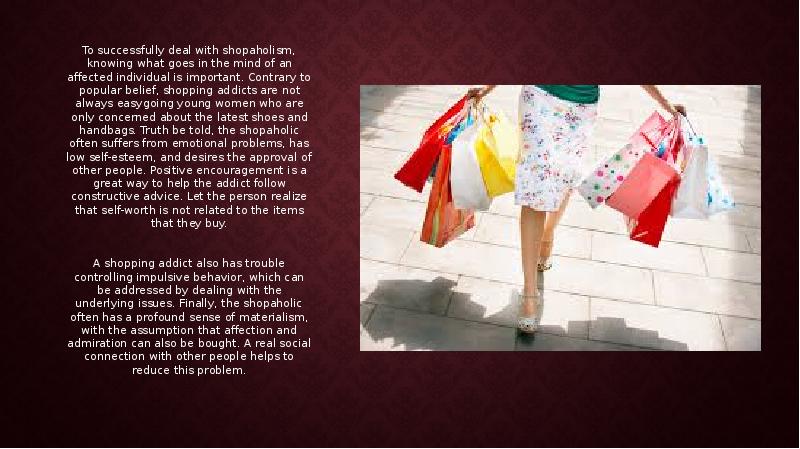How to Help a Shopaholic? презентация
Содержание
- 2. Giving in to the occasional impulse buy is normal. After all,
- 3. Understanding Compulsive Shopping
- 4. The irresistible desire to shop is known as compulsive buying disorder
- 5. How to Diagnose an Addiction to Shopping (or Shopaholism)
- 6. Ruling out normal buying behavior is important. Given that the US
- 7. How to Recognize a Shopaholic
- 8. Identifying if someone is affected by a shopping problem can be
- 9. Steps You Can Take to Help Someone With Compulsive Buying
- 10. When you recognize that someone is dealing with shopping addiction, several
- 11. Talking to a Shopaholic
- 12. One essential step to curb compulsive buying is to avoid scenarios
- 13. Learning to Cope With Shopping Addiction
- 14. To successfully deal with shopaholism, knowing what goes in the mind
- 15. How to Treat Shopping Addicts
- 16. According to WebMD, the origin of addictions remains unknown, although some
- 17. Скачать презентацию
















Слайды и текст этой презентации
Похожие презентации





























